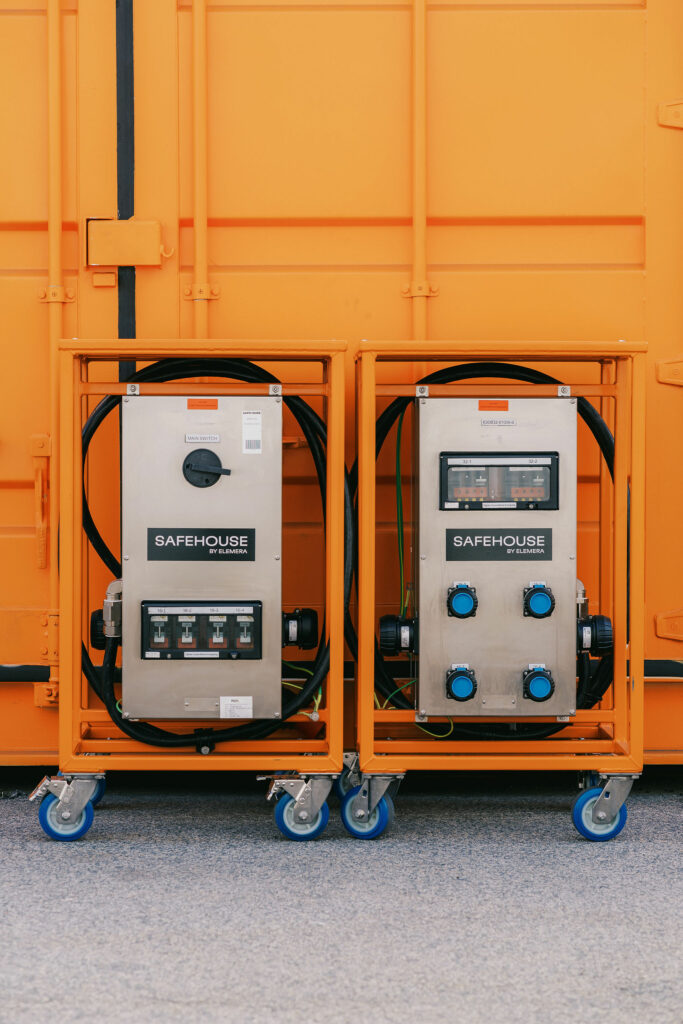The Basic Principles Of Roar Solutions
The Basic Principles Of Roar Solutions
Blog Article
Not known Incorrect Statements About Roar Solutions
Table of ContentsSome Known Questions About Roar Solutions.Fascination About Roar SolutionsNot known Details About Roar Solutions
In such an atmosphere a fire or explosion is possible when 3 standard conditions are satisfied. This is commonly described as the "unsafe location" or "burning" triangle. In order to safeguard installments from a potential surge an approach of analysing and categorizing a potentially hazardous area is required. The objective of this is to ensure the proper selection and setup of devices to ultimately avoid an explosion and to make certain security of life.
(https://forums.hostsearch.com/member.php?272308-roarsolutions)
No tools needs to be set up where the surface area temperature level of the devices is higher than the ignition temperature of the given risk. Below are some common dust harmful and their minimum ignition temperature level. Coal Dirt 380C 225C Polythene 420C (thaws) Methyl Cellulose 420C 320C Starch 460C 435C Flour 490C 340C Sugar 490C 460C Grain Dirt 510C 300C Phenolic Material 530C > 450C Aluminium 590C > 450C PVC 700C > 450C Soot 810C 570C The likelihood of the threat existing in a concentration high adequate to create an ignition will certainly differ from location to location.
In order to categorize this threat an installment is divided right into locations of threat depending upon the quantity of time the harmful exists. These locations are referred to as Zones. For gases and vapours and dirts and fibers there are 3 zones. Area 0 Zone 20 A hazardous atmosphere is extremely likely to be existing and might be present for extended periods of time (> 1000 hours each year) or perhaps continually Zone 1 Area 21 A hazardous environment is feasible but not likely to be present for extended periods of time (> 10 450 C [842 F] A classification of T6 suggests the minimum ignition temperature is > 85 C [185 F] Harmful location electrical devices perhaps made for use in higher ambient temperatures. This would certainly showed on the ranking plate e.g. EExe II C T3 Ta + 60C( This implies at 60C ambient T3 will not be exceeded) T1 T1, T2, T3, T4, T5, T6 T2 T2, T3, T4, T5, T6 T3 T3, T4, T5, T6 T4 T4, T5, T6 T5 T5, T6 T6 T6 A T Class ranking of T1 indicates the optimum surface temperature level generated by the tool at 40 C is 450 C. Thinking the linked T Class and Temperature level ranking for the tools are proper for the area, you can constantly use a tool with a more stringent Department ranking than needed for the location. There isn't a clear solution to this concern. It really does depend on the sort of equipment and what fixings need to be executed. Devices with particular examination treatments that can't be done in the field in order to achieve/maintain 3rd celebration rating. Must come back to the manufacturing facility if it is before the devices's solution. Field Repair By Authorised Worker: Complex testing may not be needed however particular procedures may require to be adhered to in order for the equipment to preserve its 3rd party ranking. Authorized personnel must be utilized to perform the work appropriately Repair should be a like for like replacement. New component have to be considered as a direct substitute calling for no special screening of the tools after the repair is full. Each item of tools with a harmful score should be reviewed independently. These are detailed at a high degree below, but also for even more detailed details, please refer straight to the guidelines.
Unknown Facts About Roar Solutions
The tools register is a comprehensive data source of devices records that includes a minimum collection of fields to recognize each product's place, technical criteria, Ex lover classification, age, and ecological data. The ratio of Detailed to Shut examinations will be established by the Equipment Risk, which is examined based on ignition threat (the possibility of a resource of ignition versus the chance of a flammable environment )and the hazardous location classification
( Zone 0Area 1, or 2). Implementing a robust Risk-Based Inspection( RBI )strategy is crucial for ensuring conformity and safety in handling Electric Tools in Hazardous Areas( EEHA).
The smart Trick of Roar Solutions That Nobody is Discussing

In terms of eruptive threat, a hazardous area is a setting in which an explosive environment exists (or might be anticipated to be existing) in quantities that require unique precautions for the building and construction, setup and use of equipment. hazardous area course. In this short article we anchor explore the obstacles faced in the work environment, the risk control procedures, and the called for competencies to function safely
These compounds can, in certain problems, create explosive environments and these can have significant and terrible consequences. Many of us are acquainted with the fire triangle eliminate any type of one of the 3 aspects and the fire can not happen, but what does this mean in the context of hazardous locations?
In many instances, we can do little regarding the levels of oxygen in the air, however we can have considerable influence on sources of ignition, for example electric devices. Harmful locations are recorded on the dangerous location category illustration and are identified on-site by the triangular "EX-SPOUSE" indicator. Below, amongst other key information, zones are divided into three types depending upon the threat, the probability and duration that an explosive environment will exist; Area 0 or 20 is considered the most dangerous and Area 2 or 22 is considered the least.
Report this page